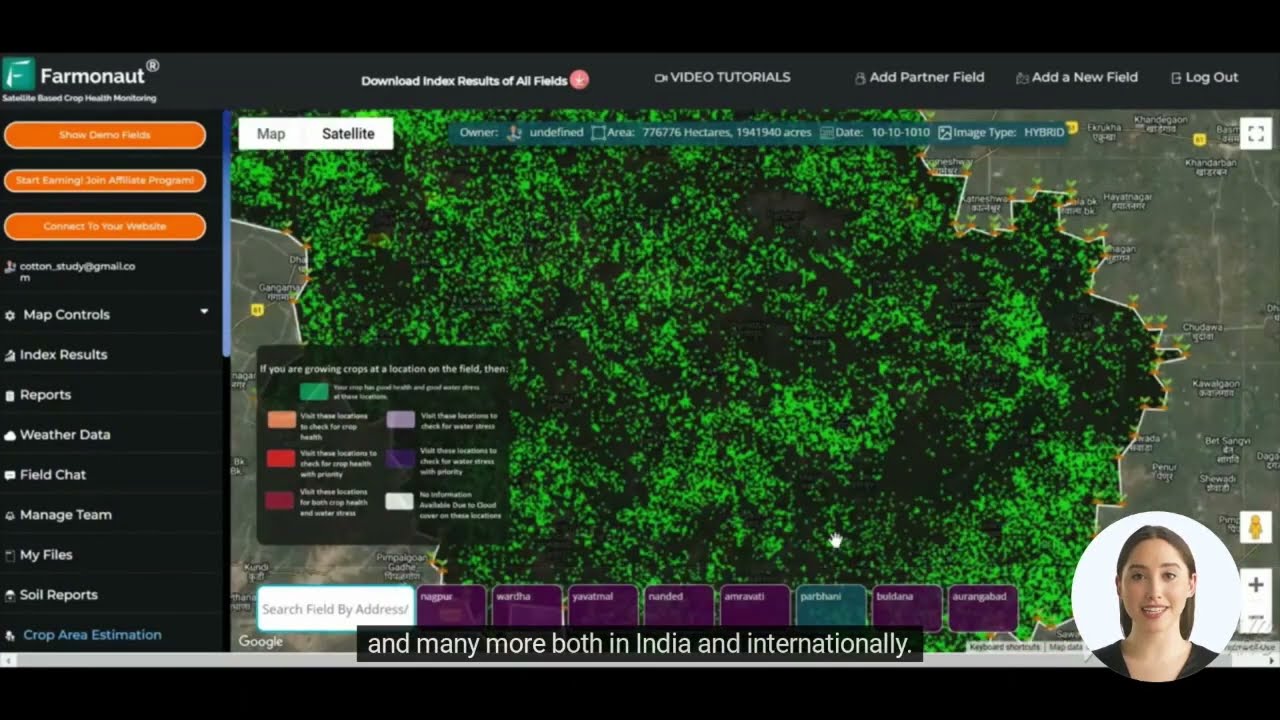National Food Security Mission: Boosting India’s Food Grain Production Through Modern Agricultural Practices
“The National Food Security Mission aimed to increase food grain production by 13 million tonnes between 2007 and 2020.”
Welcome to our comprehensive exploration of the National Food Security Mission (NFSM), a groundbreaking initiative that has transformed India’s approach to food grain production and agricultural resource management. In this blog post, we’ll delve into how NFSM’s strategic interventions have significantly boosted rice, wheat, and pulses output, enhancing food security nationwide.
The Evolution of NFSM: From Inception to Impact
The National Food Security Mission, launched in 2007, has been a cornerstone of India’s agricultural policy. Its primary objective has been to increase the production of rice, wheat, and pulses through area expansion and productivity enhancement in a sustainable manner. Let’s explore how this mission has evolved over the years and its impact on India’s food security landscape.

Key Objectives of NFSM
- Increase production of rice, wheat, and pulses
- Enhance farm-level economy to restore confidence in farming
- Create employment opportunities
- Restore soil fertility and productivity at the individual farm level
These objectives align with the broader goal of ensuring food security for India’s growing population. By focusing on these key areas, NFSM has laid the foundation for sustainable agricultural growth.
Innovative Use of GIS Technology in NFSM
One of the most significant advancements in NFSM’s approach has been the integration of Geographic Information System (GIS) technology. The Krishi Mapper app, for instance, has revolutionized crop selection and farm management processes.
GIS technology enables:
- Precise mapping of agricultural lands
- Optimized crop selection based on soil and climatic conditions
- Efficient resource allocation
- Real-time monitoring of crop health
The integration of GIS has significantly enhanced the decision-making process for farmers and policymakers alike. It’s worth noting that platforms like Farmonaut offer advanced satellite-based farm management solutions that complement these efforts.
NFSM’s Impact on Sustainable Agriculture Development
NFSM has been instrumental in promoting sustainable agriculture practices across India. Here are some key areas where the mission has made significant strides:
Distribution of Quality Seeds
One of NFSM’s primary focuses has been ensuring the availability of high-quality seeds to farmers. This initiative has led to:
- Increased crop yields
- Better resistance to pests and diseases
- Improved nutritional value of crops
Enhancement of Irrigation Facilities
NFSM has prioritized the improvement of irrigation infrastructure, recognizing its crucial role in agricultural productivity. This has resulted in:
- Expanded coverage of irrigated areas
- Introduction of water-efficient irrigation techniques
- Improved water management practices
Adoption of Modern Agricultural Practices
The mission has been at the forefront of introducing and promoting modern agricultural practices. These include:
- Precision farming techniques
- Use of farm machineries for increased efficiency
- Integrated pest management
- Soil health management
“NFSM’s strategic interventions have significantly boosted rice, wheat, and pulses output across India since its inception in 2007.”
Collaboration with Farmers and Agencies
A key aspect of NFSM’s success has been its collaborative approach. The mission works closely with:
- Individual farmers
- Farmer cooperatives
- State agricultural departments
- Research institutions
This multi-stakeholder approach ensures that the mission’s objectives are aligned with ground realities and that interventions are tailored to local needs.

NFSM’s Impact on Food Grain Production
Let’s take a look at how NFSM has influenced India’s food grain production over the years:
| Year | Rice (Million Tonnes) | Wheat (Million Tonnes) | Pulses (Million Tonnes) | Total Food Grains (Million Tonnes) |
|---|---|---|---|---|
| 2007 (Baseline) | 93.36 | 75.81 | 14.76 | 183.93 |
| 2010 | 95.98 | 80.80 | 14.66 | 191.44 |
| 2015 | 105.48 | 86.53 | 16.35 | 208.36 |
| 2020 | 118.87 | 107.86 | 23.01 | 249.74 |
| Percentage Increase (2007-2020) | 27.32% | 42.28% | 55.89% | 35.78% |
As we can see, the impact of NFSM on food grain production has been substantial, with significant increases across all major crops.
The Role of Technology in NFSM’s Success
Technology has played a pivotal role in the success of NFSM. From satellite-based crop monitoring to AI-driven advisory systems, modern technological solutions have transformed the way agriculture is practiced in India.
Companies like Farmonaut are at the forefront of this technological revolution, offering advanced solutions for crop monitoring and farm management. Their API and API Developer Docs provide valuable resources for integrating these technologies into existing agricultural systems.
Future Prospects and Challenges
As we look to the future, NFSM faces both opportunities and challenges:
Opportunities
- Further integration of AI and machine learning in agriculture
- Expansion of precision farming techniques
- Development of climate-resilient crop varieties
Challenges
- Climate change and its impact on agriculture
- Ensuring sustainable use of natural resources
- Addressing regional disparities in agricultural development
NFSM’s Role in Addressing Food Security
The National Food Security Mission has been instrumental in addressing India’s food security concerns. By focusing on increasing production, improving resource management, and promoting sustainable practices, NFSM has contributed significantly to ensuring food availability for India’s growing population.
Key achievements include:
- Increased production of rice, wheat, and pulses
- Improved farmer incomes
- Enhanced soil health and productivity
- Promotion of sustainable agricultural practices
The Way Forward: NFSM’s Ongoing Commitment
As NFSM continues to evolve, its focus remains on leveraging technology and innovation to meet India’s food security needs. The mission’s ongoing commitment includes:
- Continued investment in agricultural research and development
- Expansion of technological interventions in farming
- Strengthening of farmer support systems
- Promotion of crop diversification
These efforts are crucial in ensuring that India remains self-sufficient in food production while adapting to changing climatic conditions and evolving agricultural challenges.
How Technology is Shaping the Future of Indian Agriculture
The integration of advanced technologies is playing a crucial role in shaping the future of Indian agriculture. Here’s how various technological interventions are making a difference:
Satellite-Based Crop Monitoring
Satellite technology has revolutionized crop monitoring, allowing for real-time assessment of crop health, soil moisture levels, and potential pest infestations. Platforms like Farmonaut provide farmers with valuable insights through their satellite-based monitoring systems.
Mobile Applications for Farmers
Mobile apps have become indispensable tools for modern farmers. They provide easy access to crucial information, market prices, weather forecasts, and expert advice. You can explore these technologies through the  and
and  .
.
Precision Agriculture Techniques
Precision agriculture allows for optimized use of resources by providing site-specific management recommendations. This includes variable rate technology for fertilizer application and precision irrigation systems.
Artificial Intelligence and Machine Learning
AI and ML algorithms are being used to predict crop yields, detect diseases early, and provide personalized crop management advice to farmers.
NFSM’s Impact on Different Crops
While NFSM initially focused on rice, wheat, and pulses, its scope has expanded to include other important crops. Let’s look at how NFSM has impacted various crop categories:
Cereals
Apart from rice and wheat, NFSM has also focused on improving the production of coarse cereals like millet and sorghum. These crops are not only nutritious but also more resilient to climate change.
Pulses
NFSM has significantly boosted pulses production, addressing India’s protein needs and reducing dependence on imports. Crops like chickpeas, lentils, and pigeon peas have seen substantial improvements in yield.
Oilseeds
The mission has expanded to include oilseeds, recognizing their importance in India’s food security and reducing edible oil imports. Crops like mustard, groundnut, and soybean have been targeted for increased production.
Commercial Crops
While not the primary focus, NFSM’s strategies have indirectly benefited commercial crops like cotton, jute, and sugarcane through improved agricultural practices and resource management.
NFSM’s State-wise Implementation
The National Food Security Mission has been implemented across various states in India, with each state adapting the program to its specific agricultural conditions and needs. Here’s a brief overview of how NFSM has been implemented in different states:
- Punjab and Haryana: Focus on sustainable rice-wheat cropping systems and water conservation.
- Uttar Pradesh: Emphasis on increasing pulse production and promoting crop diversification.
- Maharashtra: Concentration on drought-resistant varieties and water-efficient farming techniques.
- Bihar: Efforts to increase rice productivity and promote maize cultivation.
- Madhya Pradesh: Focus on increasing wheat and pulse production.
The Role of Research and Development in NFSM
Research and development play a crucial role in the success of NFSM. The mission collaborates with various research institutions to develop:
- High-yielding crop varieties
- Pest-resistant seeds
- Climate-resilient agricultural techniques
- Innovative farm machinery and tools
This ongoing research ensures that NFSM remains at the forefront of agricultural innovation, continually improving its strategies and interventions.
NFSM’s Contribution to Sustainable Development Goals
The National Food Security Mission aligns closely with several United Nations Sustainable Development Goals (SDGs), particularly:
- SDG 2: Zero Hunger
- SDG 1: No Poverty
- SDG 13: Climate Action
- SDG 15: Life on Land
By focusing on sustainable food production, improving farmer livelihoods, and promoting environmentally friendly agricultural practices, NFSM contributes significantly to these global goals.
Capacity Building and Skill Development Under NFSM
An essential component of NFSM is its focus on capacity building and skill development among farmers. This includes:
- Training programs on modern agricultural techniques
- Workshops on the use of farm machinery and equipment
- Education on sustainable farming practices
- Awareness programs on market dynamics and financial management
These initiatives empower farmers with the knowledge and skills needed to adapt to changing agricultural landscapes and improve their productivity.
The Future of Food Security in India
As we look towards the future, the role of NFSM in ensuring India’s food security becomes even more critical. The mission continues to evolve, incorporating new technologies and strategies to address emerging challenges. Some key areas of focus for the future include:
- Promoting climate-smart agriculture
- Enhancing the use of digital technologies in farming
- Strengthening the agricultural value chain
- Encouraging youth participation in agriculture
With these initiatives, NFSM aims to not only maintain India’s food security but also position the country as a global leader in sustainable agriculture.
Conclusion
The National Food Security Mission has undoubtedly played a pivotal role in boosting India’s food grain production and enhancing the country’s food security. Through its multifaceted approach, integrating modern agricultural practices, technological innovations, and sustainable farming methods, NFSM has set a new benchmark in agricultural development.
As we’ve explored in this blog, the mission’s impact extends far beyond mere production numbers. It has transformed the lives of millions of farmers, improved resource management, and laid the foundation for a more sustainable and resilient agricultural sector.
Looking ahead, the continued success of NFSM will depend on its ability to adapt to emerging challenges, particularly those posed by climate change and evolving market dynamics. With ongoing commitment to research, technology adoption, and farmer empowerment, NFSM is well-positioned to guide India’s agricultural sector into a prosperous and food-secure future.
For those interested in leveraging technology for agricultural advancement, platforms like Farmonaut offer cutting-edge solutions that align with NFSM’s goals of modernizing and optimizing agricultural practices.
FAQs
- What is the National Food Security Mission (NFSM)?
NFSM is a government initiative launched in 2007 to increase the production of rice, wheat, and pulses through area expansion and productivity enhancement in a sustainable manner. - How has NFSM impacted food grain production in India?
NFSM has significantly boosted food grain production, with notable increases in rice, wheat, and pulses output since its inception. - What role does technology play in NFSM?
Technology plays a crucial role in NFSM, including the use of GIS for crop mapping, satellite-based monitoring, and AI-driven advisory systems for farmers. - How does NFSM contribute to sustainable agriculture?
NFSM promotes sustainable agriculture through the distribution of quality seeds, improvement of irrigation facilities, and adoption of modern, eco-friendly farming practices. - What are the future challenges for NFSM?
Key challenges include addressing climate change impacts, ensuring sustainable resource use, and tackling regional disparities in agricultural development.

















